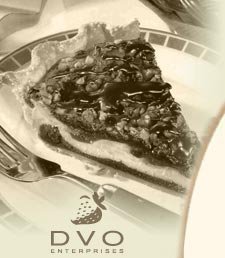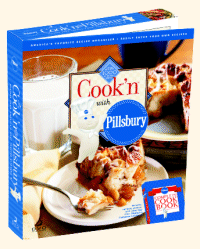
|
Never miss another recipe... Sign up for our free monthly newsletter today!
Subscribing will not result in more spam! I guarantee it! NEWSLETTER
• Current Issue• Newsletter Archive • Sign Up Now 
Cook'n with Betty Crocker 
Cook'n with Pillsbury 
Cook'n with a Taste of Home 
Cook'n in Italy 
Cook'n in Mexico |
 |
Cholesterol Trimming Tips |
|
Print this Recipe Opt for a meatless meal at least twice each week. Since all meats and meat products contain cholesterol, a meatless meal is an easy way to keep your dietary cholesterol in check. Be seafood savvy. Shellfish vary in their cholesterol content. Shrimp for example are very high in cholesterol, while scallops and mussels are quite low. All shellfish are low in total fat and saturated fat, which means that you can still eat them as part of a low-fat, low-cholesterol diet. Just make sure that you stay within you daily cholesterol limits. Limit organ meats such as liver, brain and kidney. These meats are extremely high in cholesterol and should be eaten sparingly. Instead choose lean cuts of meats. Limit eggs to four per week. The 210 milligrams of cholesterol in one egg yoke supplies more than two-thirds the recommended daily limit. The good news is that egg whites have no cholesterol, and in many chases can be used instead of whole eggs. For example, try an omelet made with one whole egg and two egg whites or use 1/4 cup fat-free cholesterol-free egg product. Choose fat-free or low-fat dairy products. Dairy products can be cholesterol culprits. Choose a cup of fat-free (skim) milk instead of whole milk and save 30 milligrams of cholesterol. Replace a 1/2 cup of sour cream with a 1/2 cup of low-fat yogurt and cut your dietary cholesterol by 70 milligrams. From "Betty Crocker's Low-Fat, Low-Cholesterol Cooking Today." Text Copyright 2005 General Mills, Inc. Used with permission of the publisher, Wiley Publishing, Inc. All Rights Reserved. This recipe comes from the Cook'n collection. Try Cook'n for FREE! Here’s to your health Fat Facts Understanding Cholesterol Other Important Nutrients Putting It All Together Reading a Nutrition Label Go Slow For Success Test Your Health IQ The Skinny on Fat Cholesterol Trimming Tips Nutritional Comparison |
|
|
Affiliate Program | Privacy Policy | Other Resources | Contact Us
© 2008 DVO Enterprises, Inc. All rights reserved. Sales: 1-888-462-6656 |

